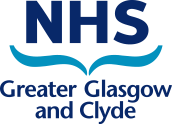13. Skin
13.4. Topical corticosteroids
Topical corticosteroid preparations that do not contain lanolin should be used where available. Patients prescribed topical steroids should have their treatment reviewed regularly to avoid unnecessary long-term use. Very potent steroids should not routinely be prescribed on repeat prescription without a dermatologist review.13.4.1. Mildly potent
Preferred List
HYDROCORTISONE (1% cream and ointment)
Prescribing Notes:
Other strengths of hydrocortisone cream or ointment are considered to be non-Formulary.
13.4.2. Mildly potent with antimicrobials
Preferred List
Total Formulary
HYDROCORTISONE, NYSTATIN, CHLORHEXIDINE (cream)
Restrictions:
Products contain nystatin 100,00 units, chlorhexidine hydrochloride 1% w/w and hydrocortisone 0.5% w/w.
13.4.3. Mildly potent with crotamiton
Total Formulary
13.4.4. Moderately potent
Preferred List
Total Formulary
13.4.5. Moderately potent with antimicrobial
Preferred List
CLOBETASONE, NYSTATIN, OXYTETRACYCLINE (TRIMOVATE)
Prescribing Notes:
This is a moderately potent topical corticosteroid with anti-infective agents (clobetasone butyrate, oxytetracycline and nystatin).
13.4.6. Potent
Preferred List
Total Formulary
FLUOCINOLONE ACETONIDE (SYNALAR) (GEL)
13.4.7. Potent with antimicrobials
Preferred List
BETAMETHASONE VALERATE, CLIOQUINOL (cream, ointment)
Prescribing Notes:
This is a potent topical corticosteroid with an anti-infective agent (betamethasone valerate and clioquinol).
Total Formulary
13.4.9. Very potent
Total Formulary
13.4.9.1. Very potent with antimicrobial
Total Formulary
13.4.8. Potent with salicylic acid
Total Formulary



